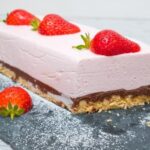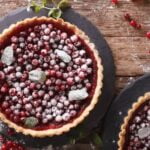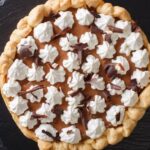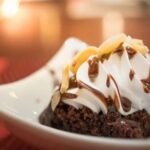Cheese cakes are a beloved dessert choice for many, with their creamy texture and rich flavors. However, what sets a cheese cake apart from the rest is its visually appealing decoration. In this article, we delve into the art of decorating a cheese cake, discussing how to elevate its aesthetic appeal and create a masterpiece that not only tastes delicious but also pleases the eye.
Decorating a cheese cake is more than just adding a few toppings or fillings. It involves careful selection of tools, choosing the right base flavors, mastering the art of crust decoration, achieving a smooth surface, and implementing creative techniques to enhance the overall design. Each step contributes to creating a cheese cake that is not only a treat for the taste buds but also a feast for the eyes.
Throughout this article, we will guide you through each stage of decorating a cheese cake. From selecting key tools and equipment to choosing the perfect base flavor, building an enticing crust, achieving smooth surfaces without cracks or lumps, exploring creative techniques, utilizing vibrant toppings and fillings, showcasing eye-catching garnishes, incorporating themed decorations for special occasions – we cover it all.
So join us on this journey as we explore the artistry of cheese cake decoration and discover how to turn any ordinary cheese cake into an extraordinary work of edible art.
Key Tools and Equipment for Decorating a Cheese Cake
Decorating a cheese cake is a creative and enjoyable process that can elevate the visual appeal of this classic dessert. To achieve professional-looking results, it is important to have the right tools and equipment at hand. Here are some essential utensils and materials that every aspiring cheese cake decorator should have:
- Offset spatula: This tool is perfect for spreading and smoothing frosting or glaze on the surface of the cheese cake. Its angled blade allows for precise control and helps create a smooth finish.
- Piping bags and tips: Piping bags are used to pipe decorative designs, borders, or writing onto the cheese cake. Different tips can create various patterns, from stars to rosettes, adding texture and elegance to the design.
- Palette knife: A palette knife is a versatile tool that can be used for both applying frosting smoothly and creating unique textures on the cheese cake’s surface. It is especially useful for making swirls or waves in the icing.
- Stencils: Stencils are an excellent way to add intricate designs or patterns to your cheese cake without needing advanced artistic skills. They come in a variety of shapes and sizes, allowing you to easily customize your design.
- Garnish tools: To create eye-catching finishing touches, invest in tools specifically designed for garnishing, such as chocolate shavers for creating curls or microplanes for grating citrus zest.
These are just a few examples of key tools that can greatly enhance your cheese cake decorating experience. Experiment with different techniques and find what works best for you.
| Tool | Description |
|---|---|
| Offset spatula | A tool with an angled blade that is perfect for spreading and smoothing frosting or glaze. |
| Piping bags and tips | Used for piping decorative designs, borders, or writing onto the cheese cake. |
| Palette knife | Useful for applying frosting smoothly and creating unique textures on the cheese cake’s surface. |
| Stencils | Add intricate designs or patterns to your cheese cake without needing advanced artistic skills. |
| Garnish tools | Tools specifically designed for garnishing, such as chocolate shavers or microplanes. |
Choosing the Perfect Base
When it comes to decorating a cheese cake, selecting the right flavor is essential. The flavor of the cheese cake serves as the foundation on which all the decorations will be built upon. Different flavors can create unique and complementary backgrounds for various toppings, fillings, or garnishes. In this section, we will explore the various cheese cake flavors available and provide recommendations on pairing them with specific decorations.
There are countless options when it comes to cheese cake flavors, ranging from classic choices like New York-style or strawberry to more adventurous options such as matcha or salted caramel. Each flavor has its own distinct qualities that can either enhance or compete with certain decorations. For example, a rich and tangy citrus-flavored cheese cake could be beautifully complemented by a vibrant fruit topping like fresh raspberries or a zesty lemon glaze.
| Cheese Cake Flavor | Recommended Decorations |
|---|---|
| New York-Style | Fresh berries (strawberries, blueberries) |
| Chocolate | Shaved chocolate curls, cocoa powder dusting |
| Matcha | Green tea mochi balls, white chocolate ganache swirls |
| Salted Caramel | Caramel drizzle, toasted pecans |
Remember that these suggestions are just starting points. Feel free to experiment and create your own unique combinations based on personal preferences and the occasion. The key is to ensure that the flavors of the cheese cake and decorations complement each other, resulting in a harmonious and delightful experience for your taste buds.
As you explore different cheese cake flavors and their potential decorations, keep in mind the overall aesthetic you wish to achieve. A well-balanced combination of flavors and decorations can create a visually stunning cheese cake that is sure to impress both your eyes and your palate.
Building a Solid Foundation
When it comes to decorating a cheese cake, the crust serves as the foundation for creating a visually appealing dessert. A well-decorated crust not only adds an extra layer of flavor and texture, but it also sets the stage for the rest of the cake’s design. In this section, we will explore the step-by-step process of creating a visually pleasing crust for your cheese cake and discuss different crust styles that you can experiment with.
Before diving into the decoration process, it is important to choose a crust style that complements your cheese cake flavors and overall theme. The most common options include graham cracker, chocolate, or cookie-based crusts. Each type offers its own unique characteristics and can add depth to your cheese cake’s presentation. For example, a graham cracker crust pairs well with fruity or light flavored fillings, while a chocolate crust may be more suited for rich and decadent cheesecakes.
To create an aesthetically pleasing crust, start by preparing your desired crust mixture according to your recipe instructions. Once mixed, press the mixture firmly into the bottom of your springform pan using either your fingertips or the back of a spoon. Make sure that the mixture is evenly distributed and pressed firmly against the pan to avoid any gaps or crumbling during baking.
To achieve additional visual interest in your cheesecake’s crust, consider incorporating decorative elements such as finely crushed cookies or nuts into your mixture before pressing it into the pan. This will add texture and enhance the overall appearance of your finished dessert.
Creamy Canvases
Creating a smooth surface on a cheesecake is crucial for achieving a professional and visually appealing result. A smooth texture not only enhances the overall appearance of the cake but also ensures a pleasant mouthfeel when enjoying each bite. In this section, we will explore some tips and tricks to help you achieve a perfectly smooth cheesecake surface.
Tips for Achieving a Smooth Texture
- Use High-Quality Ingredients: Start with the best-quality ingredients available to you, such as fresh cream cheese, high-fat content dairy products, and fresh eggs. Using quality ingredients will contribute to a smoother texture in your cheesecake.
- Properly Mix the Batter: Overmixing can introduce excess air into the batter and result in a cracked or uneven surface. To prevent this, mix the batter on low speed just until all ingredients are well combined.
- Avoid Overbaking: Overbaking can cause drying out of the cheesecake, leading to an uneven or cracked surface. It is important to follow the recommended baking time and keep a close eye on the cake as it bakes.
- Water Bath Technique: The water bath technique involves placing the cheesecake pan inside a larger pan filled with hot water before baking. The steam created by the water bath helps in maintaining even heat distribution and prevents cracks from forming on the surface.
Avoiding Cracks, Lumps, and Air Bubbles
- Room Temperature Ingredients: Allow all your ingredients to come to room temperature before mixing them together. This ensures that they combine smoothly without any lumps or air bubbles.
- Slow Cooling Process: After baking, let your cheesecake cool gradually at room temperature before transferring it to the refrigerator. Rapid changes in temperature can cause cracks or sinking in the middle of the cake.
- Use a Springform Pan: A springform pan with removable sides allows for easy release of the cheesecake without the need to flip or disturb it, reducing the chances of cracking.
- Gentle Handling: Avoid overmixing or vigorously shaking the pan during the baking process, as this can create air bubbles that result in an uneven surface. Also, be cautious when removing the cake from the pan to avoid damaging it.
By implementing these best practices, you can achieve a smooth and visually appealing surface on your cheesecake. Remember to take your time and enjoy the process, keeping in mind that practice makes perfect. In the next section, we will explore creative techniques for decorating your cheesecake design, taking your masterpiece to the next level.
From Brushstrokes to Borders
Decorating a cheese cake is an art form that allows for creativity and individual expression. From brushstrokes to borders, there are countless techniques that can be used to enhance the design of a cheese cake and create a visually appealing masterpiece. In this section, we will explore some innovative techniques that can take your cheese cake decoration to the next level.
Piping
Piping is a versatile technique that involves using a piping bag and various tips to create intricate designs on the surface of the cheese cake. It allows you to add swirls, rosettes, or even write personalized messages.
To use this technique, fill a piping bag with desired frosting or cream, choose a tip that suits your desired design, and gently squeeze while moving your hand in the desired direction. Practice on a separate surface before applying the design directly onto the cake.
Stenciling
Stenciling is another technique that can add depth and dimension to your cheese cake design. Start by acquiring food-safe stencils or create your own using thin plastic sheets. Place the stencil on top of the cheesecake surface and gently sprinkle powdered sugar or cocoa powder over it. Carefully remove the stencil to reveal the intricate pattern or image. This technique works beautifully for creating elegant motifs or adding detailed designs without any artistic expertise required.
Marbling
Marbling is a technique that creates a mesmerizing effect on the cheesecake’s surface by swirling two different colors together. To achieve this effect, divide your batter into two equal parts and dye each part with different food coloring options of your choice.
Use a spoon or spatula to randomly drop dollops of both colors onto the crust before gently swirling them together with a skewer or toothpick in fluid motions. This method creates unique patterns every time and can be customized according to personal preference.
By experimenting with these creative techniques, you can transform a plain cheese cake into an impressive work of art. Remember to have fun, embrace your creativity, and enjoy the process of cheese cake decoration.
Unleashing the Color Palette
Decorating a cheese cake is not just about making it visually appealing, but also about enhancing its flavors and textures. One way to achieve this is by utilizing vibrant toppings and fillings that add brightness and visual interest to the dessert. In this section, we will explore different ways to unleash the color palette and elevate the overall presentation of your cheese cake.
When it comes to toppings, fresh fruits are always a great choice. They not only provide pops of color but also add a refreshing element to the cake. You can use a variety of fruits like strawberries, blueberries, raspberries, or kiwi slices depending on your preference. Arrange them in an artistic manner on top of the cake or around the edges for a visually stunning effect.
Colorful sauces are another fantastic way to add vibrancy to your cheese cake. Chocolate ganache, caramel sauce, or berry coulis can be drizzled over the cake in beautiful patterns or designs. These sauces not only complement the flavor of the cake but also create an eye-catching visual contrast against its creamy surface.
If you want to take your decorations up a notch, consider incorporating edible flowers into your design. Flowers like pansies, violets, or rose petals not only look stunning but also impart a delicate floral aroma to the dessert. Be sure to use organic and pesticide-free flowers that are safe for consumption.
When choosing fillings for your cheese cake, think about how they can contribute to both flavor and aesthetics. For example, if you have a classic New York-style cheese cake base with a graham cracker crust, consider adding diced mangoes on top for a tropical twist. The bright yellow color of the mangoes will create an instant visual appeal against the golden-brown crust.
Remember that creativity knows no bounds when it comes to using vibrant toppings and fillings for decorating your cheese cake. Feel free to experiment with different combinations and find what works best for you. The goal is to create a visually stunning masterpiece that not only pleases the eyes but also tantalizes the taste buds.
Eye-catching Finishing Touches
Adding the perfect garnish to a cheese cake is the final touch that can elevate its appearance from ordinary to extraordinary. The garnish not only adds visual appeal but can also provide a hint of flavor that complements the cheese cake. With a variety of options available, it’s important to choose a garnish that enhances the overall presentation and leaves a lasting impression on your guests.
One popular option for garnishing a cheese cake is by using chocolate curls. These delicate and elegant curls add a luxurious touch to the dessert. To create chocolate curls, start with a bar of high-quality chocolate.
Using a vegetable peeler, gently shave off strips of chocolate from the flat side of the bar. You can vary the size and shape of the curls based on your preference. Once you have enough curls, carefully place them on top of the cheese cake in an artful arrangement.
Whipped cream rosettes are another classic choice for garnishing a cheese cake. These fluffy swirls instantly add a touch of elegance to any dessert table. To make whipped cream rosettes, start by chilling a metal mixing bowl and whisk attachment in the freezer for about 15 minutes.
Then, pour cold heavy cream into the chilled bowl and whip it on medium speed until soft peaks form. Transfer the whipped cream into a piping bag fitted with your desired nozzle tip. Gently pipe rosettes onto the edges or center of your cheese cake, creating beautiful peaks that enhance its visual appeal.
If you’re looking for something more decadent, try drizzling caramel over your cheesecake for an irresistible finishing touch. This adds both sweetness and aesthetics to your creation. To make caramel drizzle, combine sugar and water in a saucepan over medium-high heat until it reaches an amber color.
Allow it to cool slightly before carefully drizzling it over your prepared cheese cake using either a spoon or squeeze bottle. The caramel should create intricate patterns as it cascades down the sides of the cake, creating a stunning and delicious spectacle.
Remember, the perfect garnish should not only look visually appealing but also complement the flavors of your cheese cake. It’s important to consider taste and texture when choosing garnishes to ensure they harmonize with your chosen flavors. With a little creativity and experimentation, you can create a cheese cake that is truly a feast for the eyes as well as the palate.
- Chocolate curls
- Whipped cream rosettes
- Caramel drizzle
Special Occasion Themed Decorations
When it comes to celebrations and special occasions, a beautifully decorated cheese cake can take center stage on any dessert table. From birthdays and weddings to festive holidays, incorporating themed decorations into your cheese cake design adds an extra touch of elegance and personalization. In this section, we will explore decorative ideas tailored to specific occasions, providing unique suggestions for creating memorable cheese cakes that are sure to impress your guests.
For birthday celebrations, consider incorporating elements that reflect the personality or interests of the recipient. You can use colorful sprinkles or edible glitter to create a fun and festive look. Another idea is to use icing or fondant to decorate the cake with relevant symbols or motifs. For example, if it’s a sports-themed birthday party, you can create basketballs, soccer balls, or baseball bats out of fondant and arrange them on top of the cake.
Weddings call for sophisticated and elegant decorations that match the overall theme of the event. Consider using delicate sugar flowers cascading down the sides of the cake or adorning it with intricate piping designs.
Metallic accents like edible gold leaf or silver pearls can also add a touch of luxury to the cake. If you want to make it even more personal, incorporate elements from the wedding decor such as colors or patterns that match the bride’s bouquet or table settings.
During festive holidays such as Christmas or Easter, you have endless options for themed cheese cake decorations. For Christmas, you can create a winter wonderland by dusting powdered sugar over the top of the cake to mimic snow or using red and green fondant shapes like ornaments and holly leaves as a garnish. For Easter, think about incorporating pastel colors like pale blue or light pink into your design along with cute fondant shapes like bunnies and Easter eggs.
Remember that these are just some examples, and there are countless opportunities to get creative with themed cheese cake decorations for any occasion. The key is to think about the theme or purpose of the event and choose decorations that align with it. By taking your cheese cake designs to the next level, you can create truly show-stopping desserts that are as visually impressive as they are delicious.
Conclusion
In conclusion, decorating a cheese cake is not just about adding visual appeal, but it is also an art that allows for creativity and self-expression. Throughout this article, we have explored the key tools and equipment needed for cheese cake decoration, as well as techniques to achieve a smooth surface and create stunning designs. We have also delved into the importance of selecting the right flavor base and pairing it with toppings and fillings that complement each other.
Mastering the art of crust decoration is essential in creating a visually pleasing cheese cake. Whether you prefer a graham cracker, chocolate, or cookie-based crust, there are various styles to explore and techniques to try. Additionally, achieving a smooth surface on the cheese cake requires attention to detail and following best practices to avoid common pitfalls such as cracks or air bubbles.
When it comes to decorating the cheese cake design itself, we have introduced innovative techniques like piping, stenciling, and marbling. These techniques allow for artistic expression and can elevate the overall appearance of the cake. Furthermore, utilizing vibrant toppings and fillings such as fresh fruits, colorful sauces, or edible flowers can add brightness and visual interest.
Garnishing plays a crucial role in the final presentation of a cheese cake. By exploring different ideas like chocolate curls, whipped cream rosettes, or caramel drizzles, you can create eye-catching finishes that impress your guests. And don’t forget about special occasions. Incorporating themed decorations tailored to birthdays, weddings, or festive holidays can make your cheese cake even more memorable.
Frequently Asked Questions
What can I use to decorate a cheesecake?
When it comes to decorating a cheesecake, there are numerous options to consider. One popular choice is using a fruit topping, such as fresh berries, sliced mangoes, or even a mixed fruit medley. This not only adds vibrant colors but also provides a refreshing taste that complements the creamy texture of the cheesecake.
Another option is to use chocolate ganache, which can be poured over the cake or drizzled in a decorative pattern. Additionally, whipped cream or whipped topping can be piped on top of the cheesecake using a piping bag to create elegant designs or rosettes. Finally, you can also garnish your cheesecake with crushed nuts like almonds or toasted coconut flakes for added crunch and visual appeal.
Do you decorate a cheesecake before putting in fridge?
It is generally recommended to decorate a cheesecake before placing it in the fridge. Once the decoration has been added to the top of the cheesecake, it is best to allow it to set while chilling in the refrigerator.
This ensures that any delicate decorations will retain their shape and stay in place once the cake is served and sliced. Decorating before refrigeration also prevents condensation from forming on top of the cake after removal from the fridge, which could potentially affect certain decorations like fresh fruits or whipped cream.
How to decorate a fruit cheesecake?
Decorating a fruit cheesecake offers various possibilities to enhance its overall presentation and flavor profile. One approach is to arrange slices of fresh fruit on top of the cheesecake in an aesthetically pleasing pattern or design. This can include thinly sliced strawberries, kiwis, peaches, or any other fruits that complement your chosen flavor combination.
Another option is creating a fruit glaze by simmering together sugar and fruit juice (such as orange or lemon) until it thickens slightly, which can then be brushed over the surface of the cheesecake for added shine and flavor. Furthermore, incorporating some chopped fruits into the batter before baking allows for an even distribution of flavors throughout the cheesecake. Consider experimenting with different fruit combinations and textures to create a visually appealing and delectable fruit cheesecake.

Welcome to my blog about home and family. This blog is a place where I will share my thoughts, ideas, and experiences related to these important topics. I am a stay-at-home mom with two young children. I hope you enjoy reading it! and may find some helpful tips and ideas that will make your home and family life even better!





